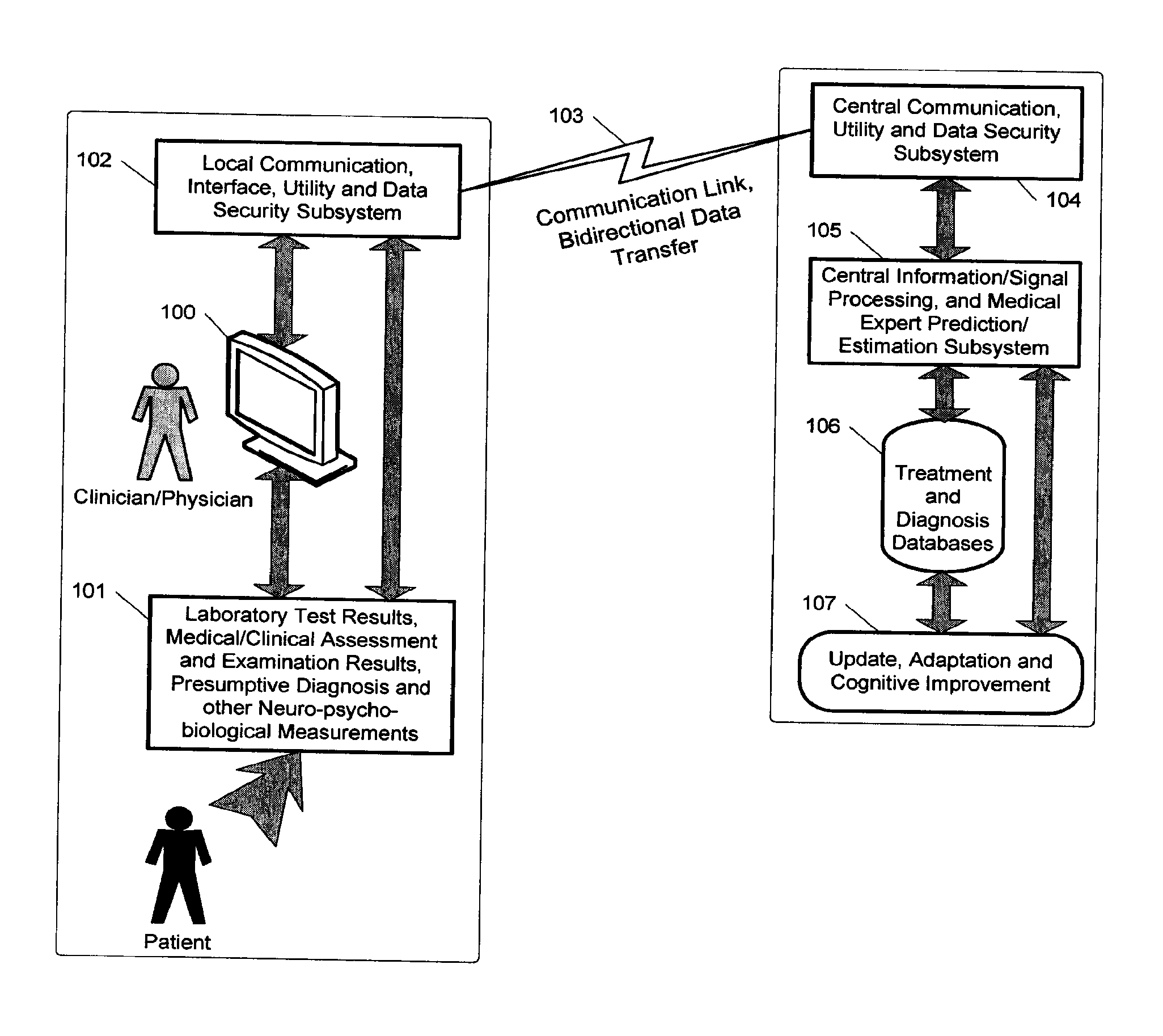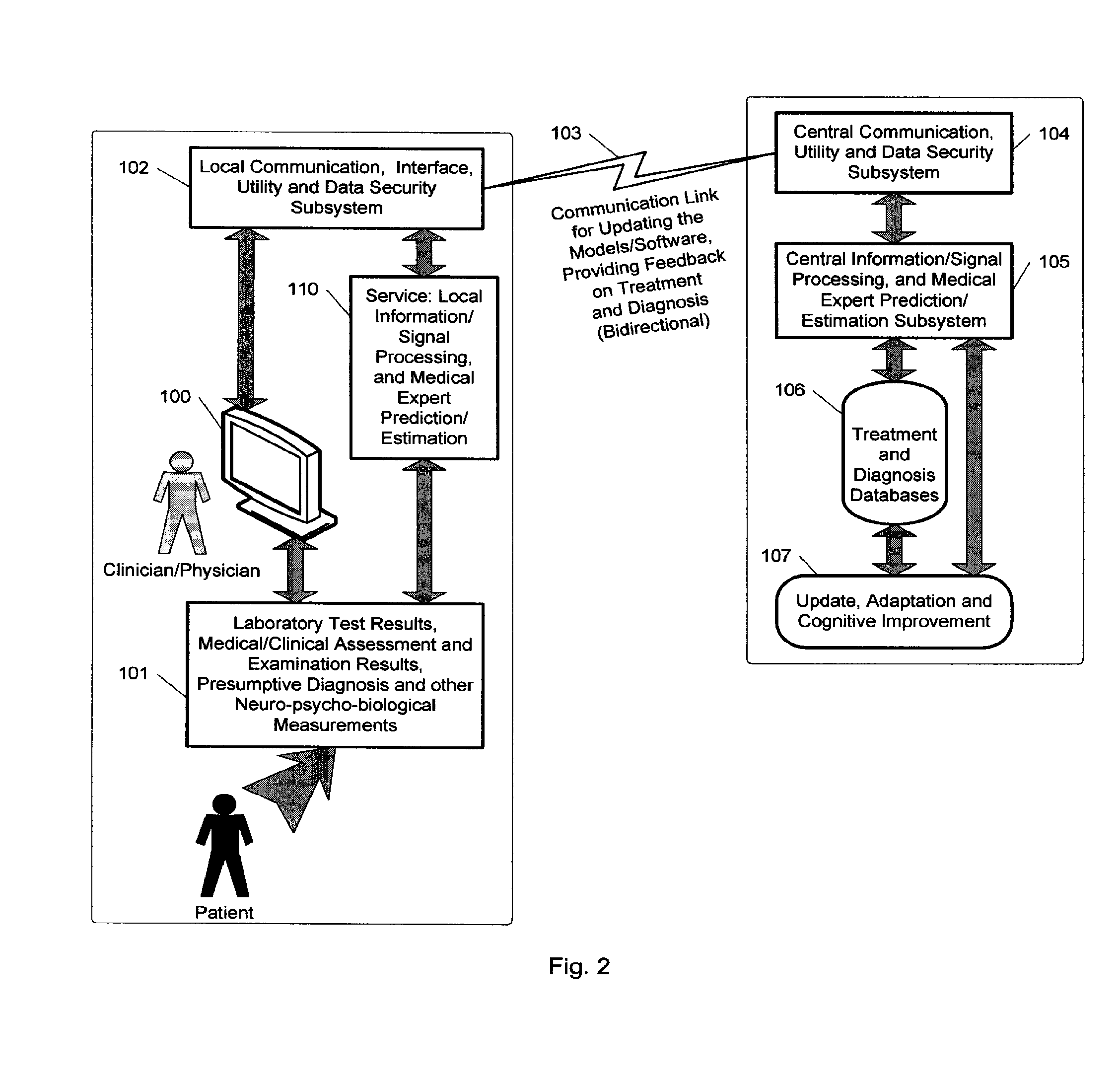Expert system for determining patient treatment response
a treatment response and expert system technology, applied in the field of medical treatments, can solve the problems of increasing despondent patients, personal and economic costs of delayed or ineffective therapy, and insufficient development of the process for selecting optimal treatment, so as to minimize the possibility of misclassification and the complexity of the classification model, the effect of minimizing the complexity of the model and minimizing the modeling error
- Summary
- Abstract
- Description
- Claims
- Application Information
AI Technical Summary
Benefits of technology
Problems solved by technology
Method used
Image
Examples
Embodiment Construction
[0068]The present invention provides a “medical digital expert system”, that is a computer-based mathematical method capable of analyzing neurophysiological information plus a wide range of clinical and laboratory data to predict treatment outcome / efficacy and, optionally, to estimate diagnosis. Alternatively, the methodology and system can be called a “digital clinician”, or a “cognitive medical expert system”, playing the role of an expert physician / clinician that extensively processes / analyzes the available clinical and laboratory information of a patient, to facilitate a medical diagnosis or make treatment recommendations. The system can provide an estimation of the level, severity, or critical medical attributes of a condition, and / or the best treatment options.
[0069]As shown in FIG. 1, in one embodiment, the “medical digital expert system” operates in the following manner. The physician, or an assistant, collects as much relevant biometric, demographic, neurological, psycholog...
PUM
 Login to View More
Login to View More Abstract
Description
Claims
Application Information
 Login to View More
Login to View More - R&D
- Intellectual Property
- Life Sciences
- Materials
- Tech Scout
- Unparalleled Data Quality
- Higher Quality Content
- 60% Fewer Hallucinations
Browse by: Latest US Patents, China's latest patents, Technical Efficacy Thesaurus, Application Domain, Technology Topic, Popular Technical Reports.
© 2025 PatSnap. All rights reserved.Legal|Privacy policy|Modern Slavery Act Transparency Statement|Sitemap|About US| Contact US: help@patsnap.com



